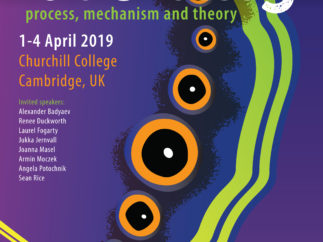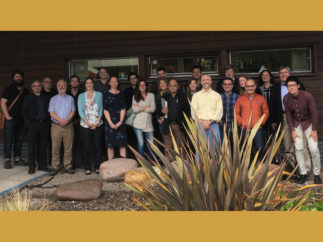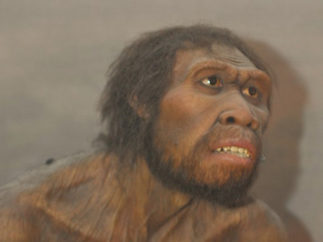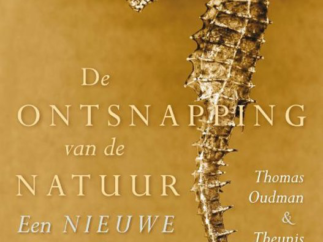‘Lá vou eu outra vez’ – As esperanças de Waddington finalmente serão cumpridas? – Parte III
por Erik L Peterson

D’Arcy Thompson and the Extended Evolutionary Synthesis
Last week I had the privilege of attending the workshop The Conceptual Legacy of “On Growth and Form” held in St Andrews UK, a (late) celebration of the centenary of publication of D’Arcy Thompson’s classic book (1917/1942).1 The meeting, organized by philosophers of biology Alan Love and Sahotra Sarkar, comprised an interesting mix of developmental biologists and philosophers. Like most evolutionary biologists, I had been vaguely aware that Thompson was an early pioneer of the use of mathematical approaches in biology. I also knew that his views were regarded as heretical by the establishment. However, prior to the workshop I had not read “On Growth and Form”, which was something of an embarrassment as D’Arcy is a famous alumnus of my university, St Andrews.
A sneaky theory of where language came from
by Ben James
‘Lá vou eu outra vez’ – As esperanças de Waddington finalmente serão cumpridas? Parte II
por Erik L Peterson

De ontsnapping van de natuur
by Thomas Oudman & Theunis Piersma
Is social transmission a forgotten force in coevolution?
During the last decade it has become impossible to ignore that social transmission of information occurs across the animal kingdom:1 humans and non-human animals alike learn by observing others. An explosion of studies demonstrate that species as diverse as Drosophila fruit flies to humpback whales either copy the behavior of others, or use it to alter their behavioral responses at a later date (social learning). If female fruit flies observe males attracting other females, any other males that share similar markings also become sexier,2 for example, while new methods for catching fish spread rapidly among humpback whale populations, mapping on to social networks of interacting individuals.3 Interestingly, social transmission does not seem to be a hallmark of socially-complex species.4 In fact, even solitary fish species are just as likely to use social information as those that live in shoals.5
United fronts: Unity, organization, and syntheses in the life sciences
In his book Consilience, E.O. Wilson described science as he saw it: one moving ever closer to shared agreement on theories, principles, concepts, and standards of evidence. For Wilson, the indications that science was unifying were obvious; “disciplinary boundaries within the natural sciences are disappearing, to be replaced by shifting hybrid domains in which consilience is implicit.” (1998, pp. 11) Yet it wasn’t just that the conciliation of science was underway. For Wilson, unification was something that should happen. Consilience went hand in hand with a humanistic vision of science: “when we have unified enough certain knowledge, we will understand who we are and why we are here.” (pp. 7)
‘Lá vou eu outra vez’ – As esperanças de Waddington finalmente serão cumpridas? Parte I
por Erik L Peterson







